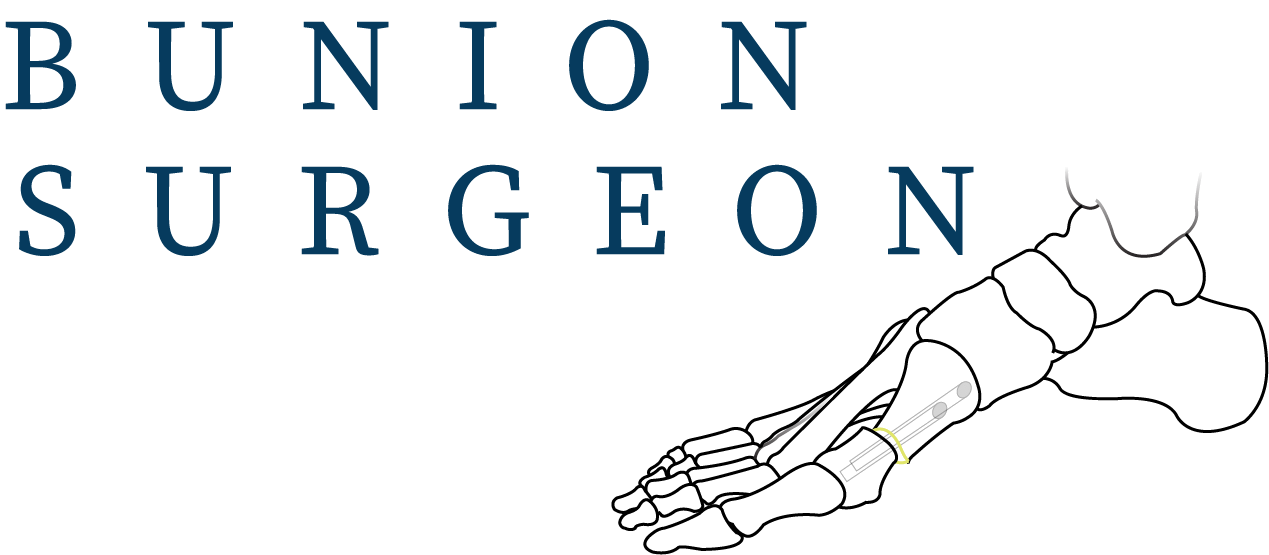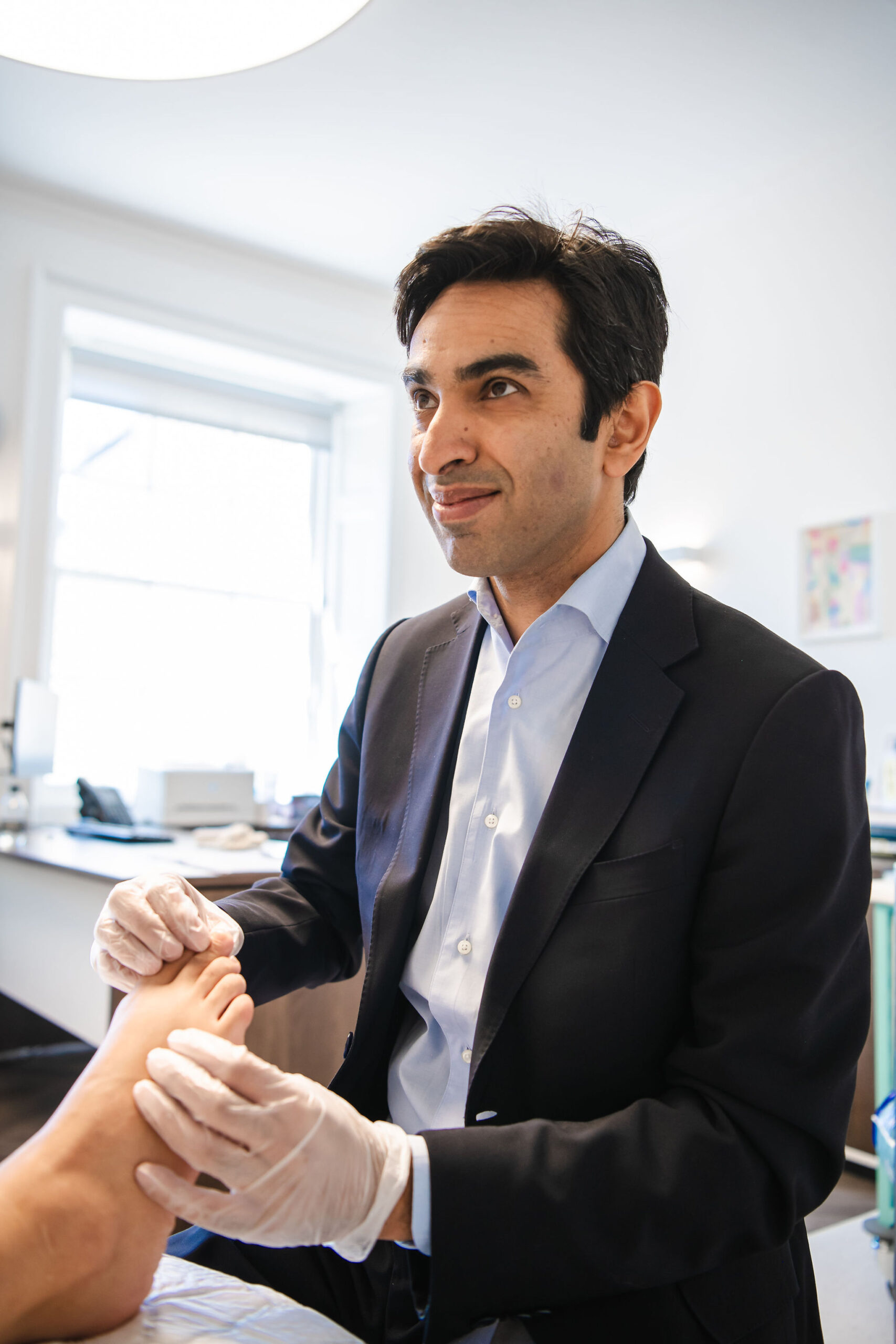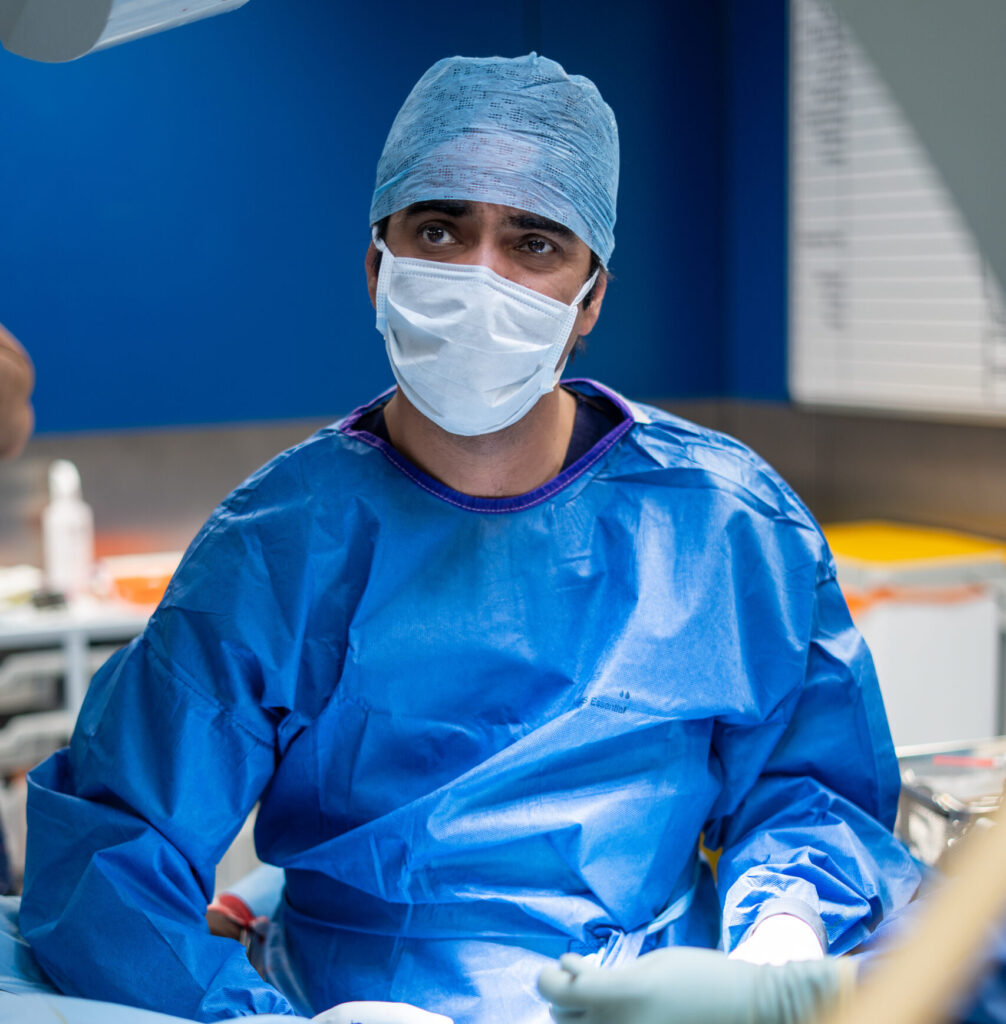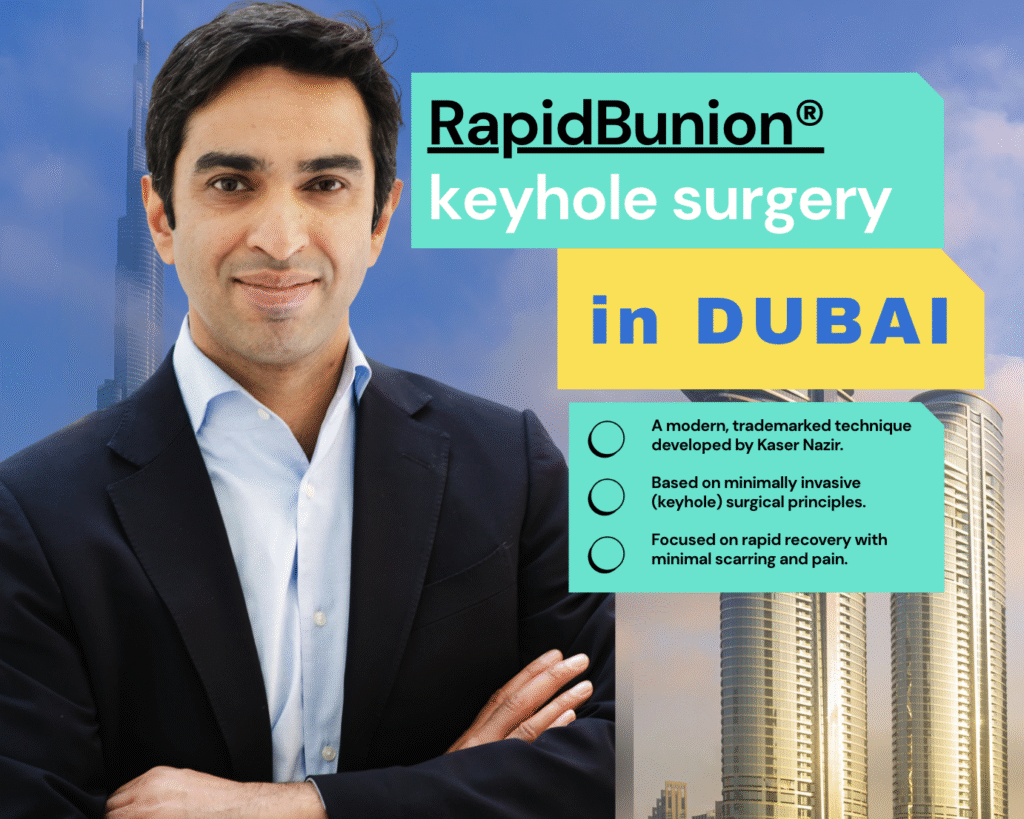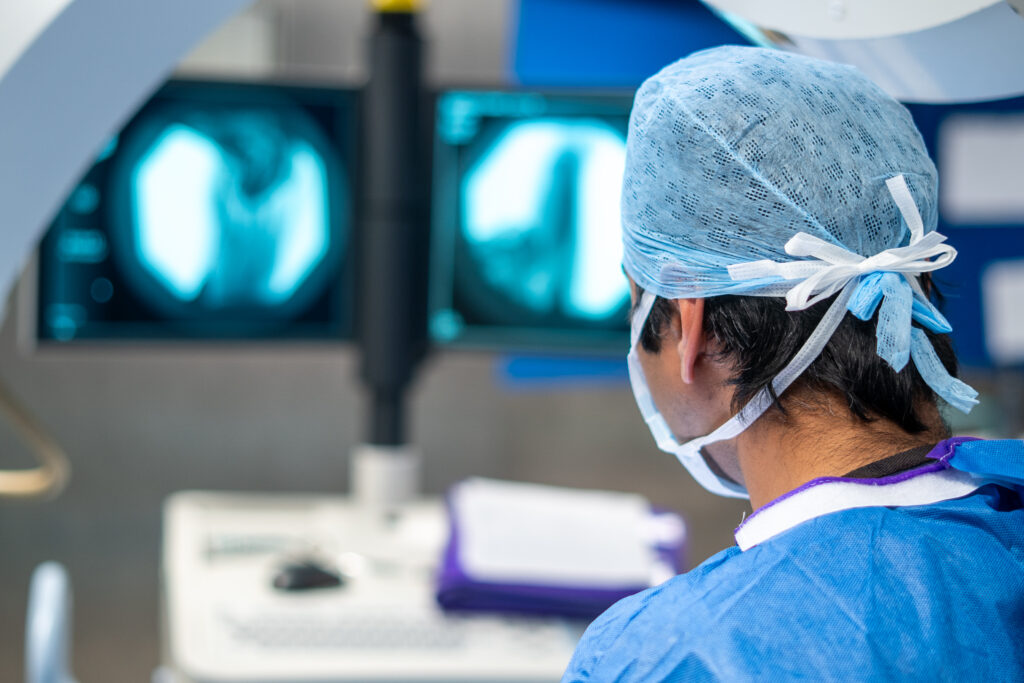Non-invasive bunion surgery is a relatively new technique that has recently been refined and improved to deliver optimal outcomes in the treatment of bunion deformities. It uses a minimal incision method, also known as a minimally invasive or keyhole bunion procedure.
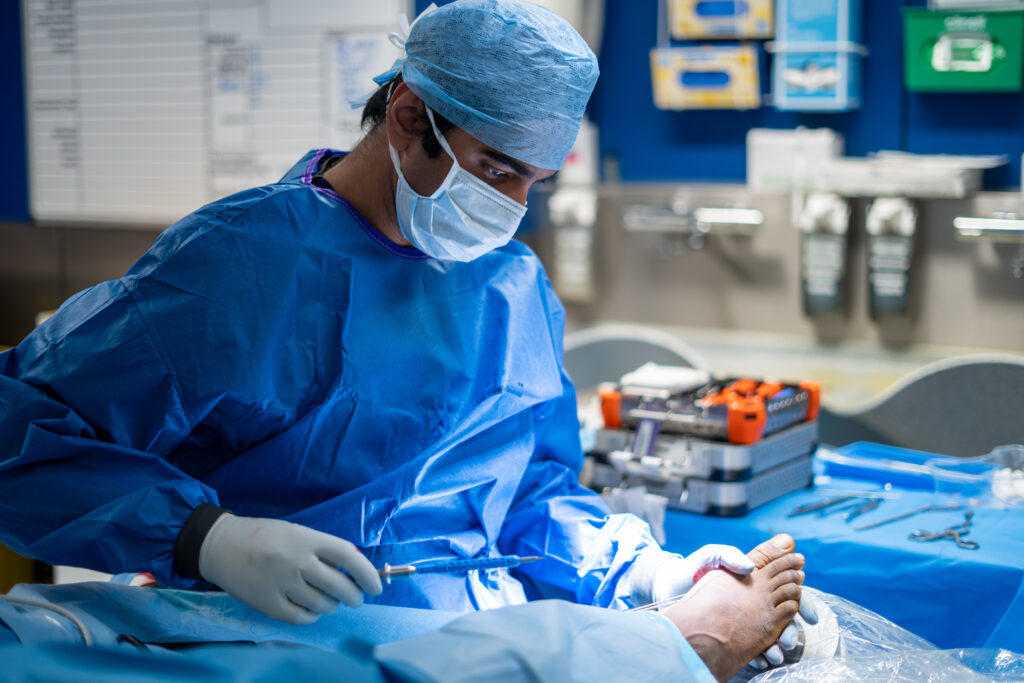
Early techniques involved the use of specialised burrs to cut the bone, after which the foot would be bandaged in position for approximately six weeks to allow the bones to heal. However, outcomes using this bandaging method were often suboptimal.
Advancements in technology have since enabled more accurate bone cutting, with cooling systems that reduce heat and tissue damage during the procedure. In combination with specially designed titanium screws—inserted through the same small incisions—this allows the surgeon to secure the bones in their corrected position while they heal.
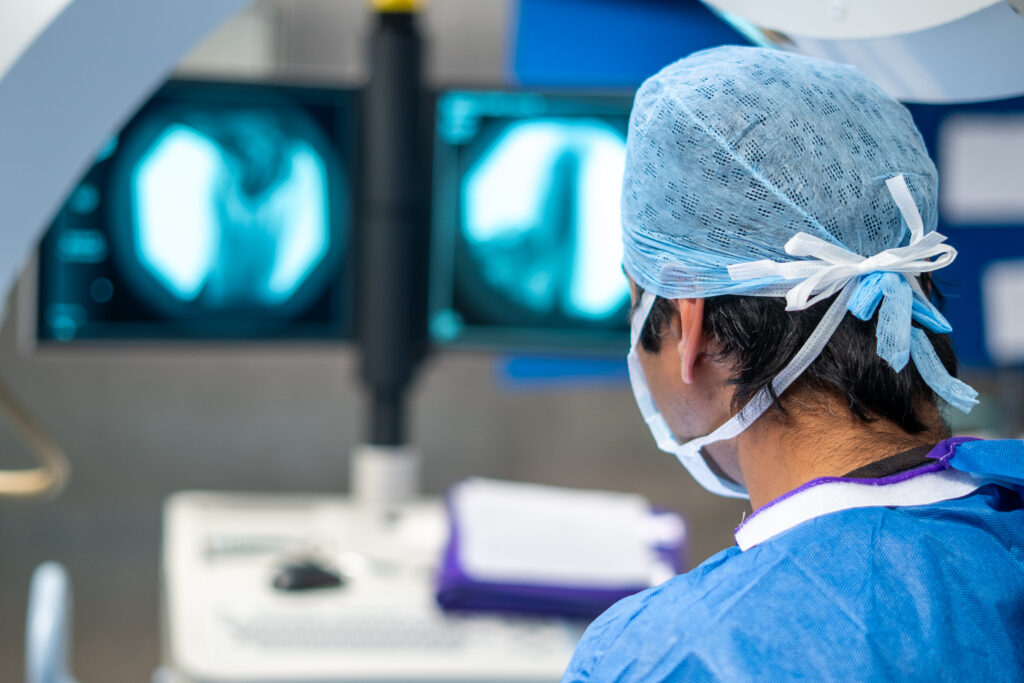
A key advantage of this procedure is the ability to bear weight on the foot from the very first day after surgery. The operation can be performed under light sedation with local anaesthetic, avoiding the need for a hospital stay or long periods of immobilisation. With minimal soft tissue disruption, postoperative pain is significantly reduced, and most patients manage well with standard over-the-counter pain relief for just two to five days.
Patients are advised to mobilise carefully in a postoperative sandal for the first two to four weeks, but they remain weight-bearing throughout this period.
Other benefits include a lower risk of recurrence of the deformity. Traditional open techniques have been associated with recurrence rates of up to 20–30%, whereas keyhole bunion procedures have demonstrated recurrence rates of less than 5%.
Additionally, complications such as joint stiffness, prolonged pain, and persistent swelling are significantly reduced with this approach.

This technique is only performed by specialist foot surgeons who have undergone specific training and acquired experience in minimally invasive bunion surgery. It is well known that this procedure has a steep learning curve, and surgeons require dedicated training to develop the necessary expertise.
To find out more, please visit our website or get in touch with us directly.
Mr Kaser Nazir is a lead surgeon at Guy’s and St Thomas’ Hospital and performs a high volume of non-invasive bunion surgeries for patients from across the country.
If you are considering this procedure, please get in touch with our clinic. We can arrange a consultation via phone, video call, or in person, depending on your preference. As part of the assessment, we will organise X-rays to evaluate the condition of your bones and joints and determine your suitability for surgery. You will be fully guided through each step of the process with personalised advice and support.
For further information and guidance, we invite you to explore our YouTube channel or contact us here. We look forward to supporting you on your journey to resolving your bunion concerns.
Free Initial Bunion Consultation with Harley Street Expert Surgeon
For a limited time, you can book a complimentary initial bunion chat with leading consultant surgeon Mr. Kaser Nazir at Harley Street, London. Visit our Complimentary Initial Bunion Consultation page and act now.
This is a rare opportunity to meet face-to-face with one of the UK’s most respected bunion surgeons, specialising in minimally invasive bunion surgery. Best of all – it’s completely free.
To secure your place:
- Visit our Complimentary Initial Bunion Consultation
- Join the waiting list for your free consultation
- Take your first step towards pain-free feet
Final Thoughts
If bunions are affecting your comfort, mobility, or confidence, now is the perfect time to seek expert advice – without the usual consultation fee.
This complimentary initial bunion consultation with Mr. Kaser Nazir on Harley Street is your chance to:
- Meet a leading bunion surgeon face-to-face
- Learn about advanced minimally invasive techniques
- Start your journey towards healthier, pain-free feet
✨ Don’t miss this rare opportunity. Book your place on the waiting list today – before all free slots are gone.
